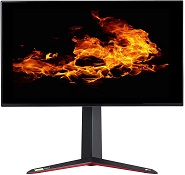What is an OLED Screen Burn-In?
OLED burn-in occurs when your screen displays content that has static elements for a long period of time. For example channel logos, if you use your display for gaming then mini maps, scoreboards and the list goes on.
There is no need to panic if your display is showing such symptoms. If you are lucky, the symptoms you observe could be for image retention, which can simply go away if you watch something else for a while. However if it doesn’t go away then your screen, unfortunately, has fallen victim to burn-in and sadly there isn’t anything that can be done about it as most manufacturers don’t cover burn-ins, so all you can really do is pray that it fades away over time.
Prevention
There are, however, a number of ways you can avoid image retention or burn-ins from happening.
Nowadays most OLED’s come equipped with a number of helpful features, such as the “Pixel shift or Screen shift”, that moves the images from time to time to reduce the chances of screen retentions or burn ins, or screen saver feature, which switches to a videos if the display is idol for a certain amount of time. Moreover Pixel or Panel Refresher can completely terminate image retention, although it may take a while. Lastly if you use your display at maximum brightness or contrast, it can lower the lifespan of your screen as OLED’s can dim down over time.
It is note-worthy that Samsung’s QD-OLED panels offer a greater burn in resistance, wider color gamut and a higher brightness than ordinary OLED panels out there.
So all in all if you don’t watch the same content for a long time or run the aforementioned features on your display (if offered), then image burn-in or retention really isn’t a threat to your screen. If you use your OLED display mostly for background noise, while you undertake other tasks, then it is strongly advised that you switch to a LCD or LED display.

